NCERT Solutions for Class 10 History Chapter 4 – The Age of Industrialisation
NCERT Solutions for Class 10 History Chapter 4 – The Age of Industrialisation are essential for understanding how industrial growth reshaped economies and societies in the CBSE curriculum. These well-structured answers help students grasp topics like proto-industrialisation, factory systems, labour, and social changes in India and Europe. Designed as per the latest syllabus, these solutions strengthen conceptual clarity and improve exam preparation. Ideal for revision and practice, they highlight the transformative power of industry, making them a valuable study tool for scoring well in Class 10 Social Science exams.
NCERT Solutions For Class 10 History – The Age of Industrialisation – Exercise Images
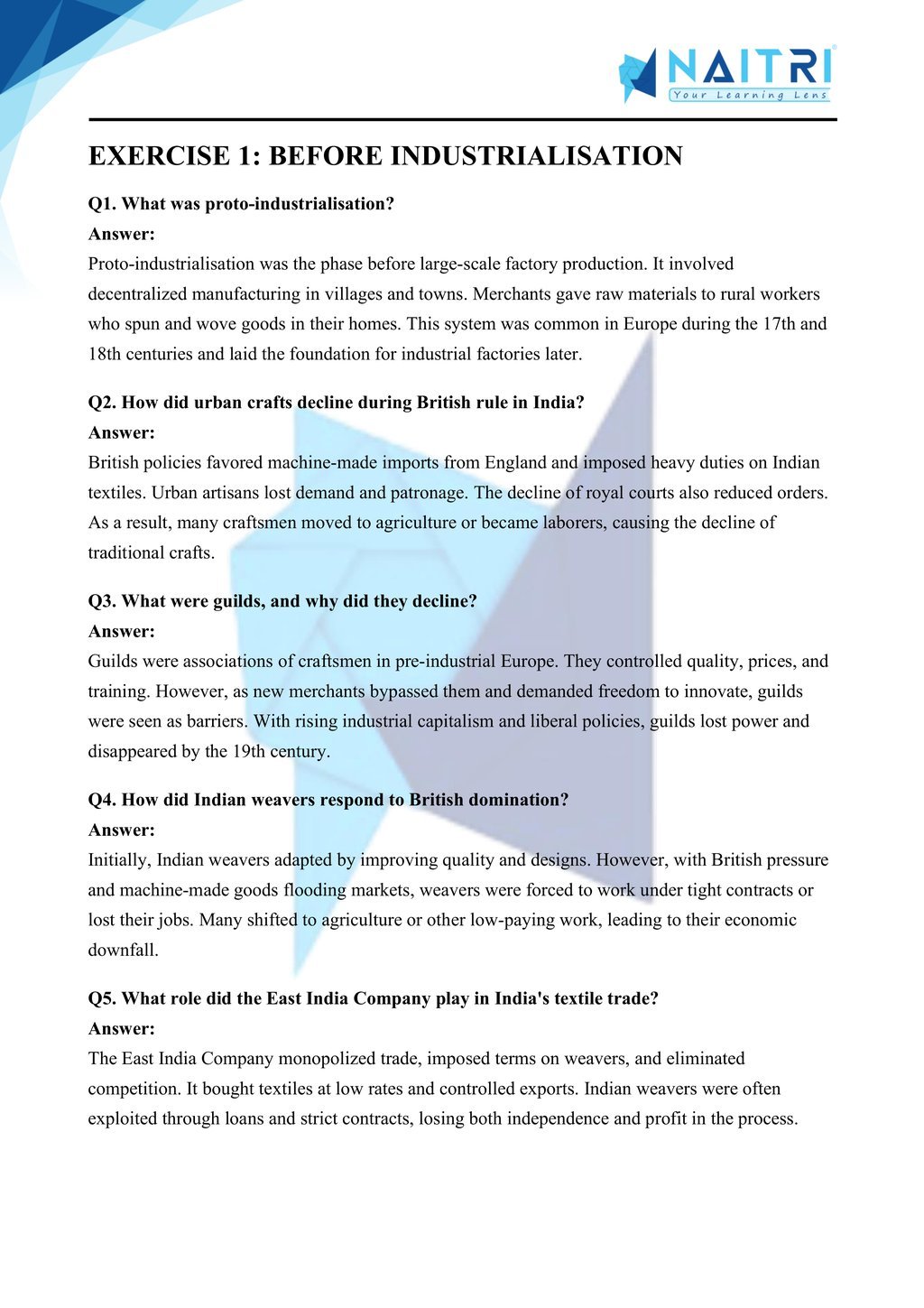
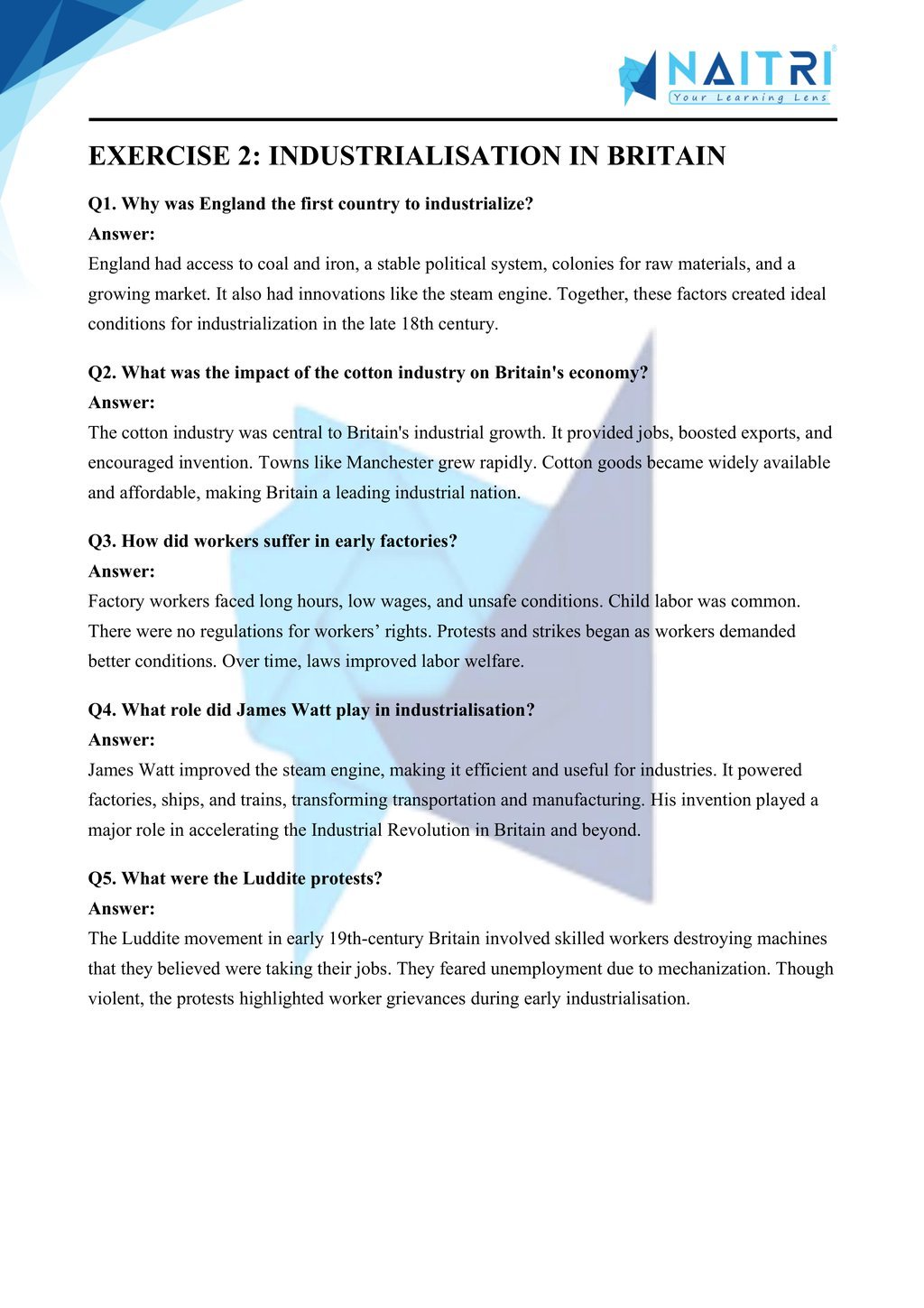
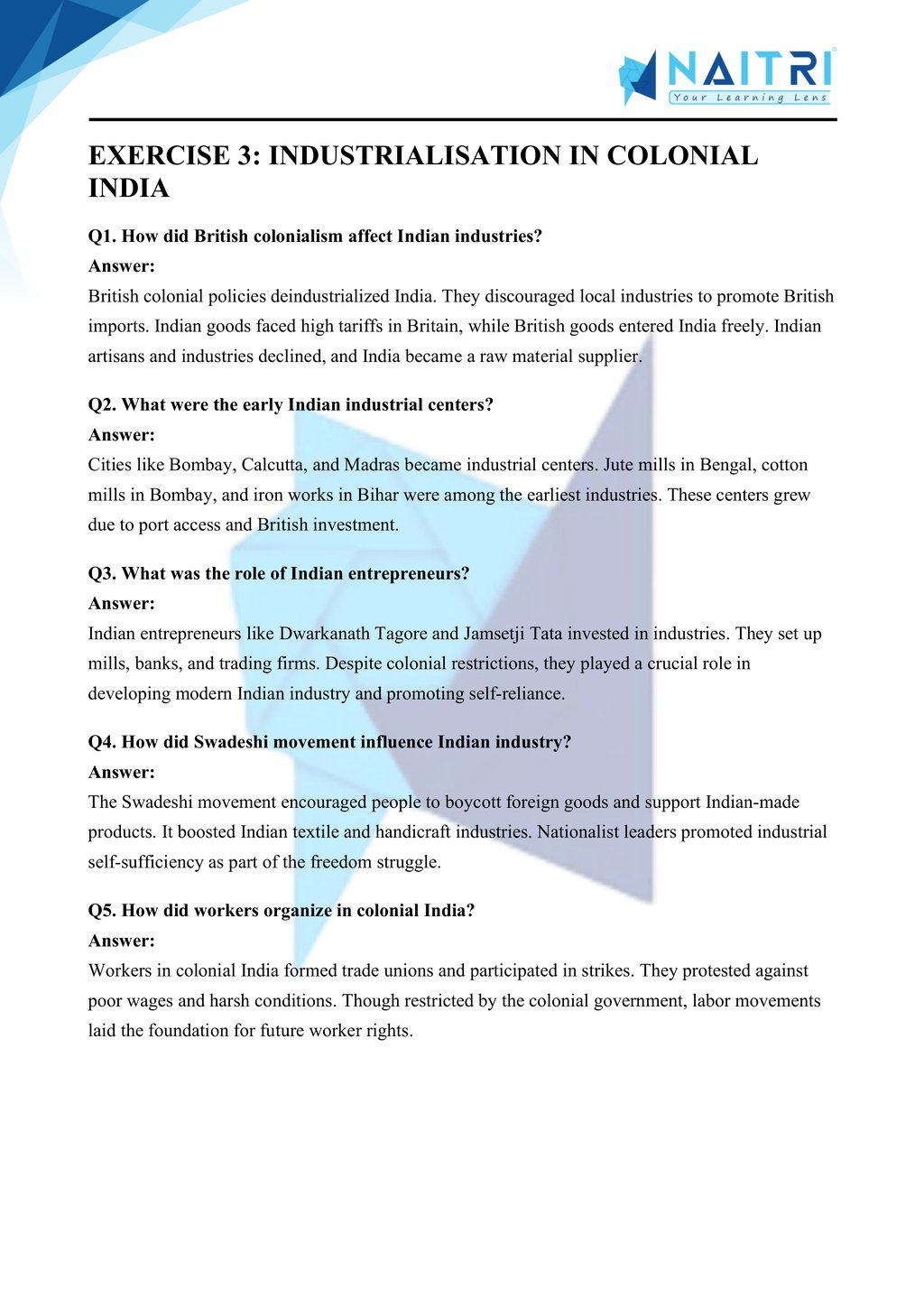
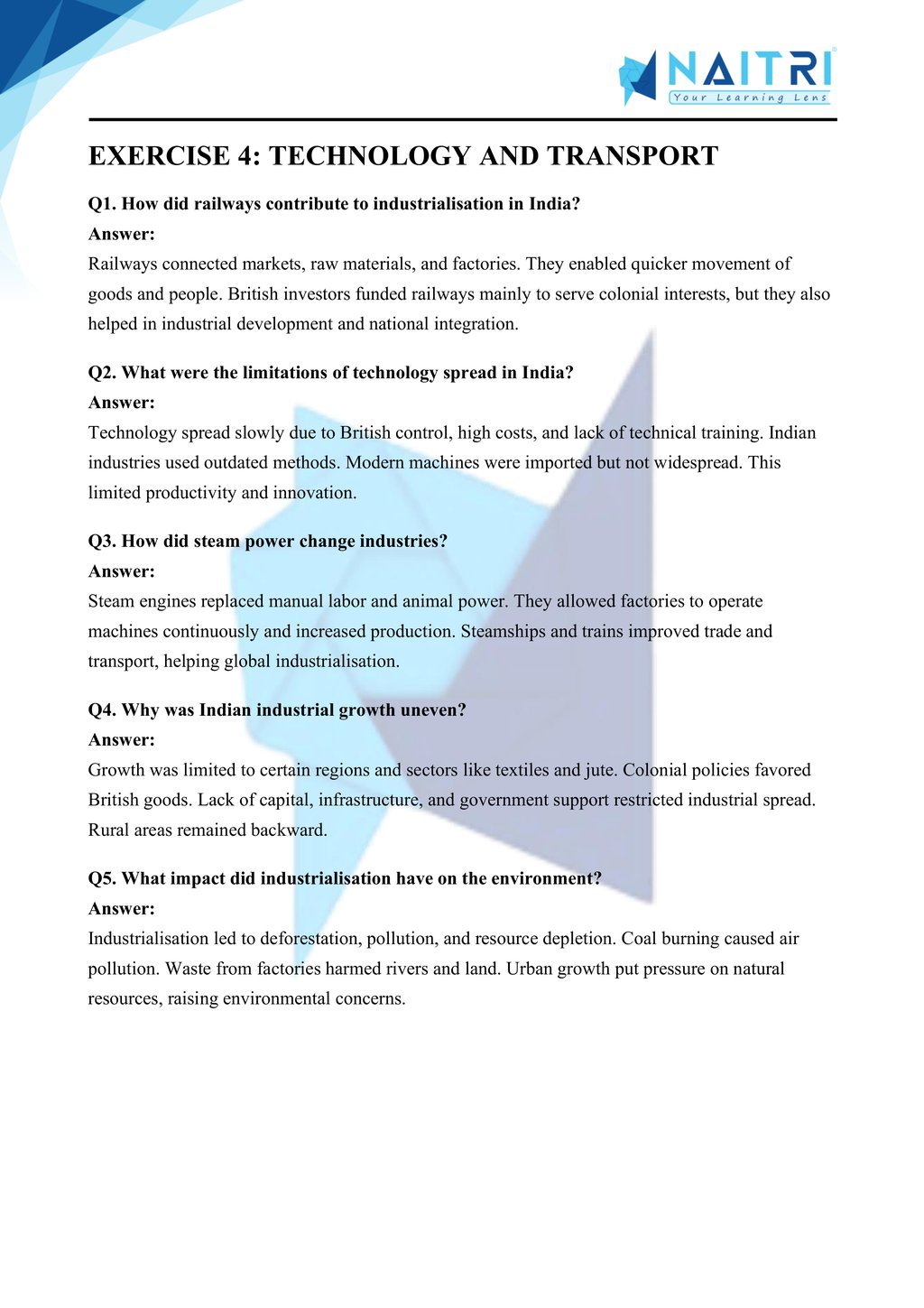
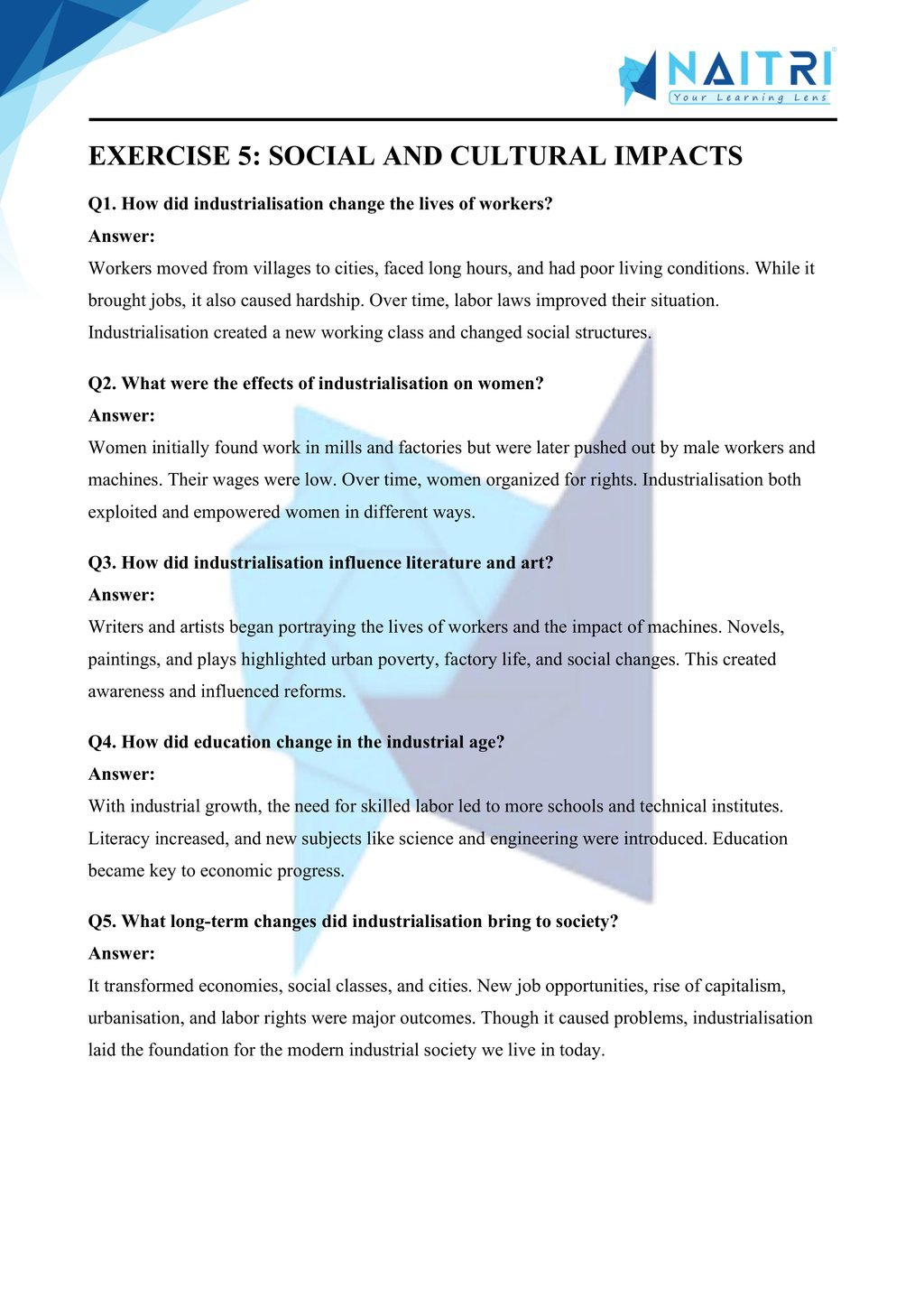
Experience Science Like Never Before – With AR!
Understanding The Age of Industrialisation is now more exciting and immersive! With the NAITRI App, you can explore complex history concepts through Augmented Reality (AR). Watch machines take over, factories rise, and urban life transform — right in front of you. Our AR-powered lessons make learning interactive, 3D, and fun, helping you retain concepts better and enjoy every topic.



Visualize . Interact . Understand . The future of learning is here
The Age of Industrialisation – Important Questions with Answers
What is meant by proto-industrialisation?
Answer: Proto-industrialisation refers to the phase before industrial factories when production was done by artisans and peasants at home, often coordinated by merchants.How did proto-industrialisation help rural people?
Answer: It provided employment to rural families who worked from home for European merchants, supplementing agricultural income and engaging them in commercial production.What were guilds in Europe?
Answer: Guilds were associations of artisans or craftsmen who controlled production, quality, and trade in towns, often restricting entry to outsiders.Why did merchants move to the countryside in 18th-century England?
Answer: Due to guild restrictions in towns, merchants moved to villages to bypass rules and access cheap laborand raw materials for production.Name any two European countries where industrialisation began.
Answer: The process began in Britain and Belgium, where mechanised textile production and coal-based industries led the early phase of industrial development.Why was Britain called the ‘workshop of the world’?
Answer: Britain had a vast network of factories, especially in textiles, which supplied goods globally due to mass production and technological advancement.What were the major industries in pre-colonial India?
Answer: India had flourishing cotton, silk, and metal industries, especially in Bengal and Surat, with skilled artisans and widespread trade networks.How did the East India Company affect Indian weavers?
Answer: The company imposed monopolies, bought goods at low prices, and often used coercion, pushing many weavers into poverty and unemployment.What was the impact of the Industrial Revolution on Indian textiles?
Answer: Cheap machine-made textiles from Britain flooded Indian markets, causing a decline in Indian handicrafts and loss of livelihoods for artisans.How did Indian entrepreneurs emerge during British rule?
Answer: Indian traders like Dwarkanath Tagore and Jamsetji Tata invested in textiles, jute, and later steel, despite British restrictions on Indian industry.What was the role of advertisements in industrialisation?
Answer: Advertisements helped create brand awareness, influenced consumer choices, and promoted foreign goods as superior, especially through calendars, labels, and hoardings.Why was the Indian textile industry important for Britain?
Answer: Britain depended on raw cotton from India for its textile mills and used India as a market for finished British goods.What was the role of the railway in British India?
Answer: Railways facilitated the movement of raw materials and finished products, expanding British economic control and suppressing Indian local markets.Who was a jobber in Indian mills?
Answer: A jobber was a supervisor hired by industrialists to recruit workers. They often controlled workers and acted as intermediaries with local influence.Why did workers join industrial production in cities?
Answer: Workers migrated to cities seeking employment, higher wages, and due to landlessness or poverty in rural areas during colonial rule.What was the condition of Indian workers in factories?
Answer: Indian workers faced long hours, poor wages, and no job security. Factory conditions were harsh with limited rights and safety measures.How did European managing agencies dominate Indian industry?
Answer: They controlled investment, technology, and marketing. Indian businesses could invest, but key decisions remained with British managing agencies.Name two Indian industrialists of the 19th century.
Answer: Jamsetji Tata and Dwarkanath Tagore were leading entrepreneurs who set up ventures in textiles, shipping, and later steel and power.Why were early Indian industries confined to certain regions?
Answer: Access to ports, raw materials, and proximity to British control made cities like Bombay, Calcutta, and Madras industrial hubs.What was the ‘fly shuttle’ in weaving?
Answer: The fly shuttle was a device that increased weaving speed and productivity in textile looms, introduced in Indian weaving during industrialisation.How did handloom weavers survive the pressure of machine-made goods?
Answer: Some adapted to design changes, catered to niche markets, or worked under merchants producing for domestic or specific foreign buyers.What were the effects of World War I on Indian industries?
Answer: WWI disrupted British imports, boosting Indian production, increasing demand for industrial goods, and giving local industries a temporary growth boost.What does ‘capital’ mean in the context of industrialisation?
Answer: Capital refers to money or assets invested in setting up factories, buying machines, and hiring labor for industrial production and growth.How did Indian industrialists use nationalism in advertisements?
Answer: They promoted goods using Swadeshi slogans, Indian symbols, and nationalistic appeals to encourage buying Indian-made products during the freedom struggle.What is the legacy of Indian industrialisation during colonialism?
Answer: Despite challenges, Indian industrialists laid the foundation for future growth. Post-independence, this helped India emerge as an industrialised nation.
The Age of Industrialisation explores the process of industrial development in Britain, Europe, and India. It begins with proto-industrialisation and moves through technological advancements and factory systems. The chapter highlights how industrialisation transformed economies, labor systems, and urban life. It also discusses the role of Indian artisans, merchants, and entrepreneurs in the face of colonial industrial policies.
Download Naitri App
Easy, Visual Learning — Right on Your Phone
Learn with Augmented Reality! The Naitri app makes CBSE and MP Board concepts interactive and fun — even in low-resource settings. Watch lessons, complete homework, take tests, and track progress — all in one place. Anytime. Anywhere.
Available on








